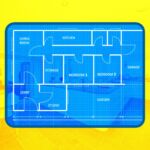
In today’s world, technology has become a crucial part of our lives. It has changed how people think and
AR technology has gained a following in the educational market for its ability to bridge gaps and bring a more tangible approach to learning. Learner-centered activities are enhanced by the incorporation of virtual and real-world experience. AR has the potential to change education to become more efficient in the same way that computers and the Internet have.
Research Overview
Research conducted for this literature review focused on learning applications of AR. The initial search of K-12 applications was far too broad to provide a valuable synthesis. The keywords included learning applications, science or STEM focus, and augmented reality.
Journals with a concentration in technology and education that held significance to AR within the classroom setting were sought. References were included that explained the concept of AR as well as studies that implemented AR. Most of the references for this analysis were published within the past five years; however, a few articles included were published as early as 2010.
AR educational programs are learner-centered and related to learner interests. It allows learners to explore the world in an interactive way. Constructivism also encourages learners to work collaboratively, and AR provides learners the opportunity to do this in a traditional school setting as well as in distance education.
Dunleavy et al. believe that the engagement of the learner as well as their identity as a learner is formed by participating in collaborative groups and communities. Constructivism has also changed the role of the educator to become a facilitator, where the responsibility to organize, synthesize and analyze content information is in the hands of the learner.
Flow theory describes how people who are engaged in meaningful activities are more likely to stay focused. Bressler and Bodzin investigated a science gaming experience in relation to flow experience. Their study had a mean flow experience score of 82.4 percent, which indicates that the average learner experienced flow throughout the science mystery game that they played on a smartphone. This particular type of AR, as well as various others, connects their real-world surroundings to learning in a new and engaging way.
AR allows flexibility in use that is attractive to education. AR technology can be utilized through a variety of mediums including desktops, mobile devices and smartphones. The technology is portable and adaptable to a variety of scenarios. AR can be used to enhance content and instruction within the traditional classroom, supplement instruction in the special education classroom, extend content into the world outside the classroom and be combined with other technologies to enrich their individual applications.
In any educational setting, there are often limitations in the various resources available. This is often seen foremost in the traditional classroom. Due to budget restraints or constraints on time, the means to teach learners in scenarios that allow them to learn by doing can be a challenge. Desktop AR allows learners to combine both real and computer-generated images.
Iordache and Pribeanu used desktop AR that combined a screen, glasses, headphones, and a pointing device that allowed learners to conduct a hands-on exploration of a real object, in this case, a flat torso, with superimposed virtual images. Computer images could show the process, but the pointing device allowed learners to guide their learning.
This research paper was





 New Episode
New Episode





 Latest IoT News
Latest IoT News







